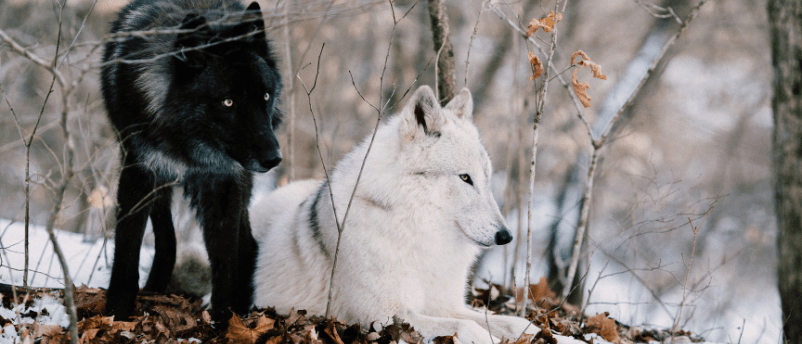
BioTechniques News
Aisha Al-Janabi

Scientists demonstrate an association between the distribution of black wolves across North America and Canine Distemper Virus (CDV) outbreak frequency.
The further south you go, down from Arctic Canada towards the Rocky Mountains, the more black wolves you find; however, their distribution is sporadic. Why are there areas across North America where black coat coloration is common or absent within wolf populations? This is the question an international collaboration led by Tim Coulson at the University of Oxford (UK), set out to answer in a recently published paper. By analyzing data from North American wolf populations, the researchers found that the gene variant responsible for black coat color helps protect against Canine Distemper Virus (CDV). The study provides insight into disease as an influential driver of species evolution and morphology.
This is the first time that scientists have been able to offer an explanation for why wolves’ coloration changes across the North American continent. Tim Coulson explains, “In most parts of the world black wolves are absent or very rare, yet in North America they are common in some areas and absent in others. Scientists have long wondered why. We now have an explanation based on wolf surveys across North America and modeling motivated by extraordinary data collected by co-authors who work in Yellowstone.”
The proposed hypothesis posited that the gene responsible for coat color in wolves, CPD103, may also play a role in protecting against respiratory diseases like CDV.
To test this theory, the researchers analysed data from 12 wolf populations across North America for the presence of CDV antibodies. They also looked at 20 years-worth of data from the wolf population residing in Yellowstone National Park as it is known to have been hit by three major outbreaks of CDV in 1999, 2005, and 2008.
 Mathematical model calculates energetics of biological weapons
Mathematical model calculates energetics of biological weapons
Researchers at the University of Illinois have created a mathematical model to compare the energetics of different piercing mechanisms found in nature.
The data showed that black wolves had higher instances of CDV antibodies and were more common in areas where outbreaks have occurred. This means that, when compared to gray wolves, black wolves are more likely to survive following infection.
Following these results, the team postulated that in areas that have experienced CDV outbreaks, gray wolves would opt to choose mates of the opposite coat color to maximize the chances of having offspring with black coats, surviving, and passing on their genes. To investigate this, the researchers used mathematical models that showed which mating choice strategy would be optimal under different disease outbreak frequencies. The predictions closely matched the observations that, in areas where CDV outbreaks occur, pairings are typically black-gray.
The findings are consistent with the scientists’ hypothesis – the distribution of black wolves across North America is affected by the frequency of CDV outbreaks because the gene variant that causes black coat coloration in wolves may also protect against infection with distemper.
Whilst the association between color and disease resistance has been displayed in many other species including insects, amphibians, birds, and non-human mammals, these are the first findings made in wolves.
Peter Hudson (Pennsylvania State University, PA, USA), a senior author on the study, explained his enthusiasm for the project stating that, “what I love about this study is how we have been able to bring together experts from so many fields and a range of approaches to show how disease can have remarkable impacts on wolf morphology and behavior. We are learning that disease is a major evolutionary driver that impacts so many aspect aspects of animal populations.”
This research is the first step towards understanding the full extent of how disease outbreaks have affected North American wolf populations. Future publications will likely focus on investigating the immune mechanisms behind how this variant provides protection against CDV, and whether other respiratory infections are also important for mate selection.
The post Back to black? Canine Distemper Virus outbreaks influence North American wolves’ coat colors appeared first on BioTechniques.
Full BioTechniques Article here
Powered by WPeMatico
